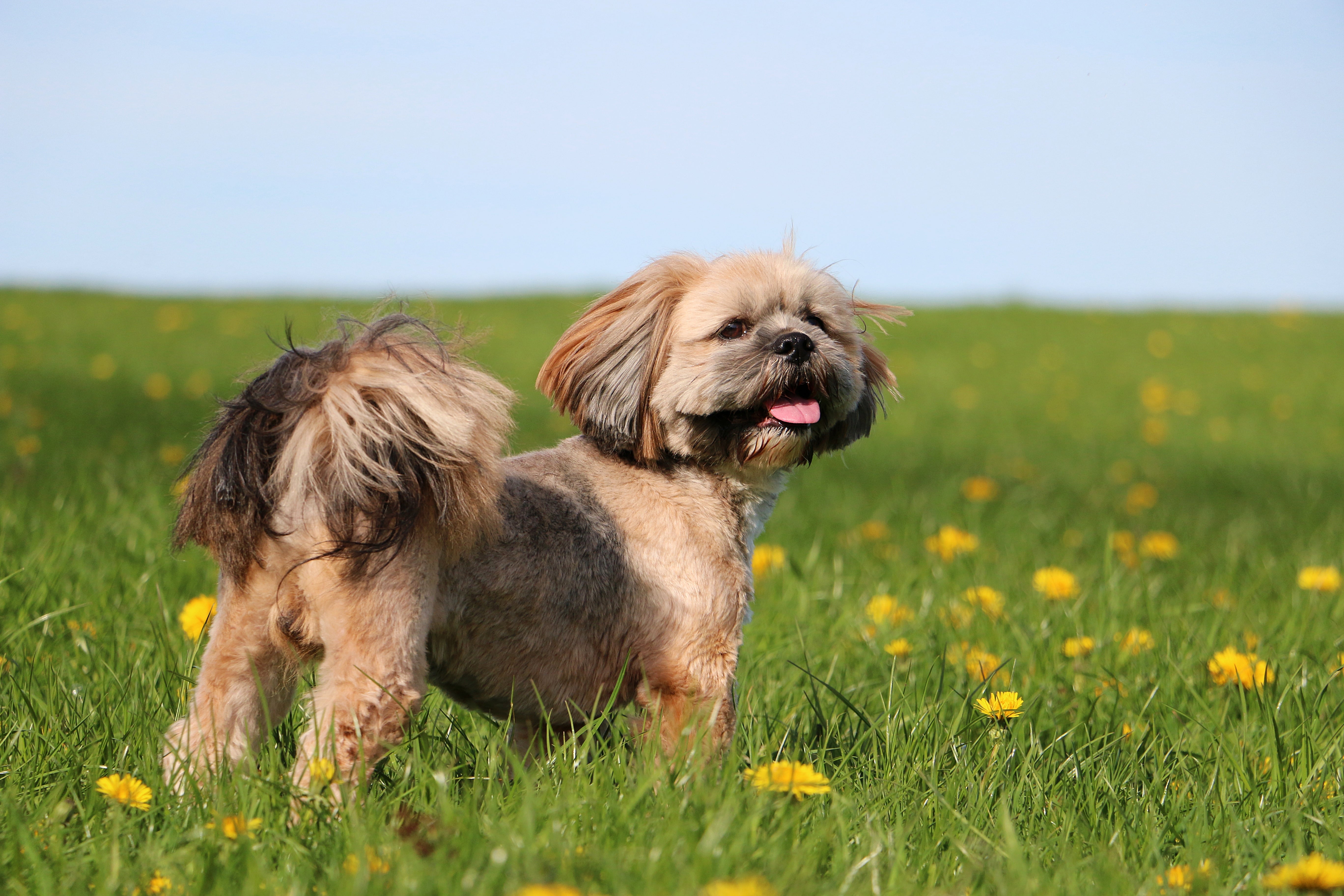Lhasa Apso
A small dog with a tenacity and stubborn streak, the Lhasa Apso has a long history associated with the monasteries of Tibet where they were bred as watchdogs and companion dogs. Sturdy and independent, they come in various colors and feature a longer top coat with a shorter undercoat. They are adaptable and friendly, although they do well with calmer environments over noisy ones.
Breed characteristics carousel
Learn More
Need to Know
- Dog suitable for non-experienced owners
- Basic training required
- Generally healthy breed
- Enjoys active walks
- Small dog
- Some drool
- Requires frequent grooming
- Quiet dog
- Barks and alerts to visitors/anything unusual
- Could have issues with unknown dogs but gets along with known dogs
- Gets along with other pets with training
- May need additional supervision to live with children
- Needs a small yard or can happily live in the city
- Can be left alone occasionally with training
- AKC Registered Breed

Personality
While this lion dog might look like a happy-go-lucky lap pup, the Lhasa Apso is a tough, independent, and bold breed. They have been bred for thousands of years as companions to Tibetan monks and can adapt well to small spaces despite also loving romping around outside and mental games. They love nothing more than being close to their owners, and going on as many adventures as they’ll allow. They can be reserved with strangers but are overall highly adaptable.
An ancient breed, the precise origin of the Lhasa Apso isn’t clear. They were bred and revered in the villages and monasteries of Tibet, intertwined with Buddhism. Souls of lamas, or spiritual teachers, were said to enter the dog’s bodies upon death. The dogs were also monastery watchdogs, earning the nickname “Bark Lion Sentinel Dog” in the native language. The western name Lhasa Apso likely came from this. When the breed first appeared in the greater Western world around 1930, it was as a gift of the thirteenth Dalai Lama. Over the last 100 years or so, they’ve increased in popularity as family dogs.
Owners will need to groom Lhasa Apsos often, even if trimmed. They need brushing, even with a shorter coat, because they can mat easily. While bred as companion lap dogs, they do enjoy exercise alongside following their owners around, so it’s important to work outdoor time in every day. They do well in homes with children who are older and with homeowners who are home most of the day or who are willing to take them places.
Daily exercise, mental stimulation, and owner interaction will keep these pups happy. They have plenty of energy and love to work it out, or they can stay home and play games with their owners.
Originally, these little lion dogs led very closed-off lives in the monasteries of Tibet. Over time, it’s made them companion dogs who are fine with confined or small spaces and urban living, so long as they have access to the outdoors.
Break out your wallet or block some time on your calendar—Lhasa Apsos are high-maintenance dogs when it comes to grooming. The longer top coat is heavy and slightly rough, and the undercoat is shorter and softer. The undercoat needs to be combed frequently to prevent mats and tangles. Some owners opt to have them cut short professionally.
Training isn’t hard to do with the Lhasa Apso. But they do require patience and consistency, as well as motivation as training isn’t something they necessarily enjoy but can excel at. They might even appear disinterested, so it’ll take a deft hand and lots of composure to train them.
These adorable dogs can make great family members as they are highly adaptable and amiable. They can be sensitive, though, and can get nervous around too much noise or chaos. Small children might not be ideal for them, but older children can be.
The cost of a Lhasa Apso from a breeder is significantly more than the cost of adopting one from a local shelter or rescue. The adoption fee usually covers additional items such as spaying or neutering, vaccines, and microchipping.

Learn more about feeding and caring for your Lhasa Apso on Purina.
Did You Know?
- There are legends and myths about this breed – the most romantic involves the Siberian goddess Sako. Every year she gave birth to two offspring, one with wings and one without. The wingless one was an Apso but because it couldn’t fly, it fell to its death


